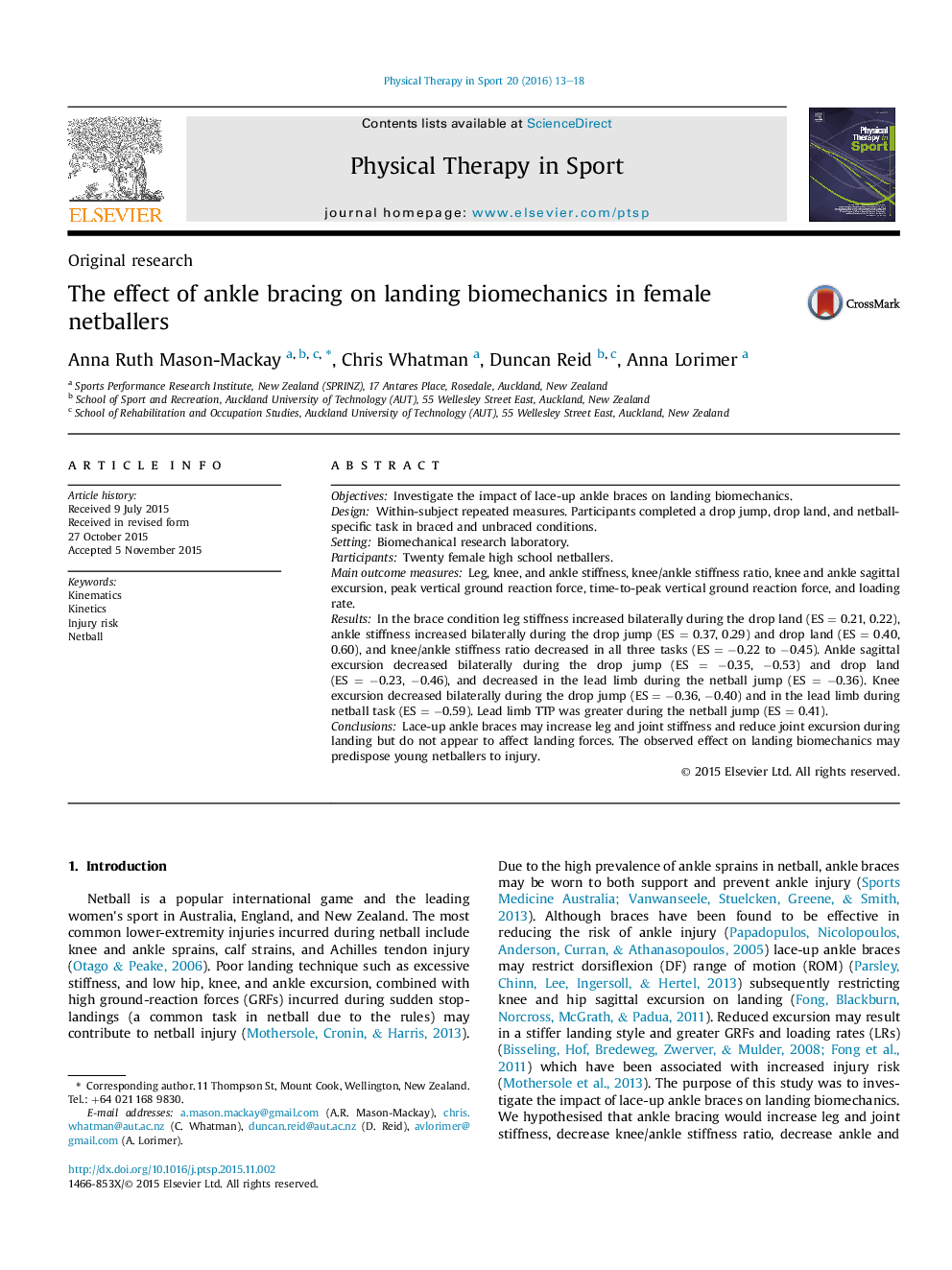| Article ID | Journal | Published Year | Pages | File Type |
|---|---|---|---|---|
| 2709732 | Physical Therapy in Sport | 2016 | 6 Pages |
•The effect of ankle bracing on landing biomechanics was investigated.•Ankle bracing may increase leg and joint stiffness during landing.•Ankle bracing may decrease knee and ankle joint sagittal excursion during landing.•These effects may predispose young netballers to injury.
ObjectivesInvestigate the impact of lace-up ankle braces on landing biomechanics.DesignWithin-subject repeated measures. Participants completed a drop jump, drop land, and netball-specific task in braced and unbraced conditions.SettingBiomechanical research laboratory.ParticipantsTwenty female high school netballers.Main outcome measuresLeg, knee, and ankle stiffness, knee/ankle stiffness ratio, knee and ankle sagittal excursion, peak vertical ground reaction force, time-to-peak vertical ground reaction force, and loading rate.ResultsIn the brace condition leg stiffness increased bilaterally during the drop land (ES = 0.21, 0.22), ankle stiffness increased bilaterally during the drop jump (ES = 0.37, 0.29) and drop land (ES = 0.40, 0.60), and knee/ankle stiffness ratio decreased in all three tasks (ES = −0.22 to −0.45). Ankle sagittal excursion decreased bilaterally during the drop jump (ES = −0.35, −0.53) and drop land (ES = −0.23, −0.46), and decreased in the lead limb during the netball jump (ES = −0.36). Knee excursion decreased bilaterally during the drop jump (ES = −0.36, −0.40) and in the lead limb during netball task (ES = −0.59). Lead limb TTP was greater during the netball jump (ES = 0.41).ConclusionsLace-up ankle braces may increase leg and joint stiffness and reduce joint excursion during landing but do not appear to affect landing forces. The observed effect on landing biomechanics may predispose young netballers to injury.
